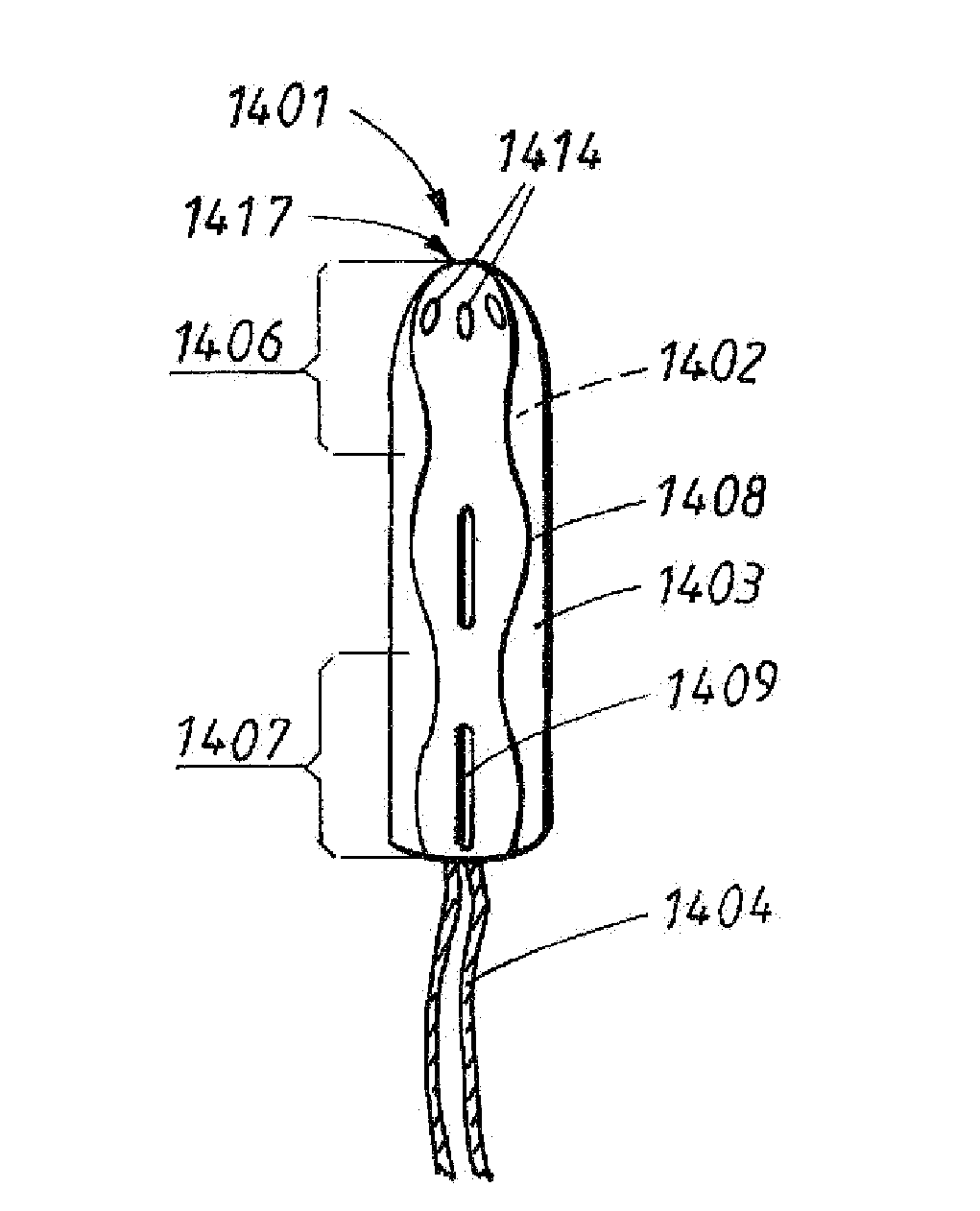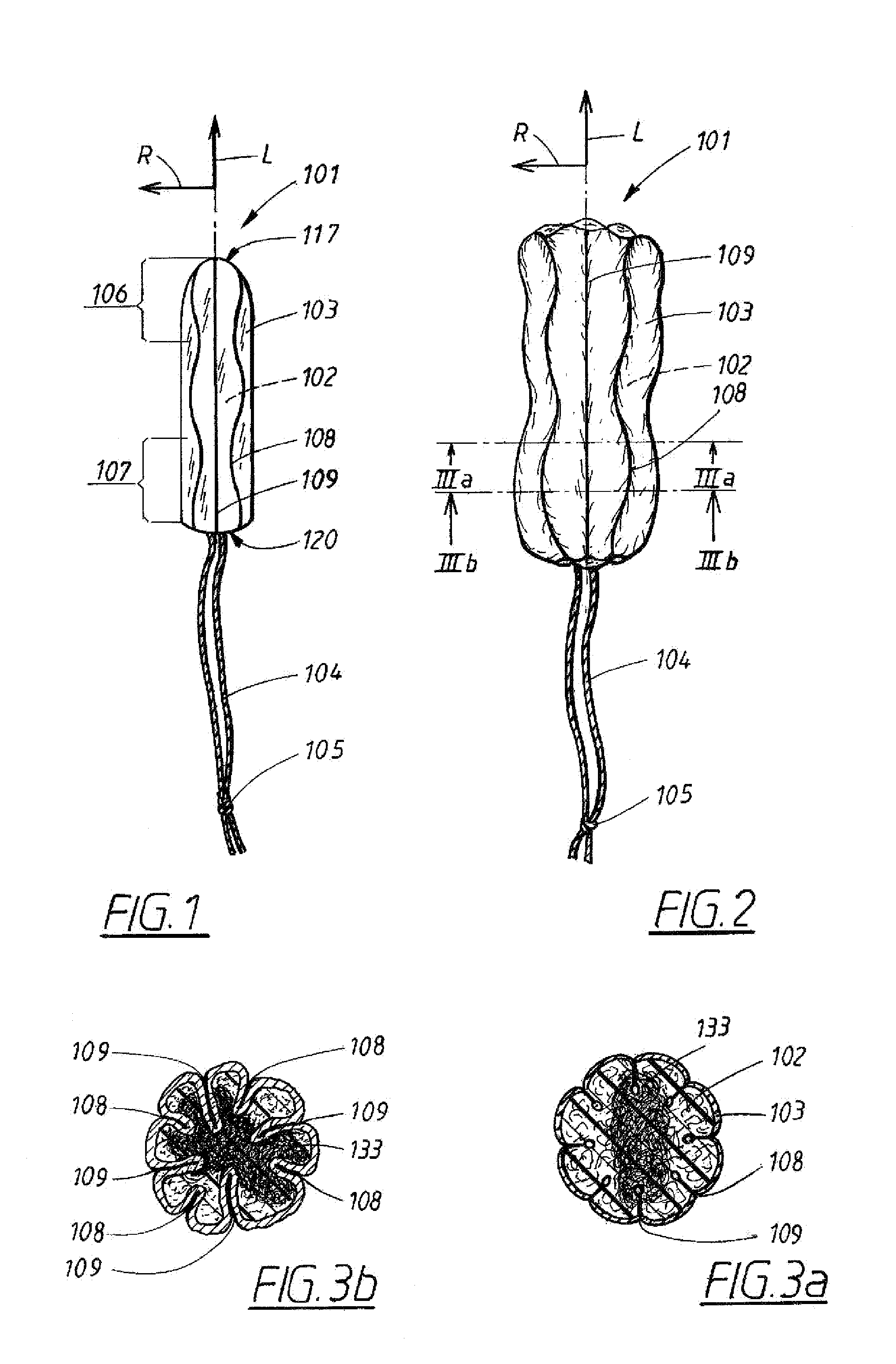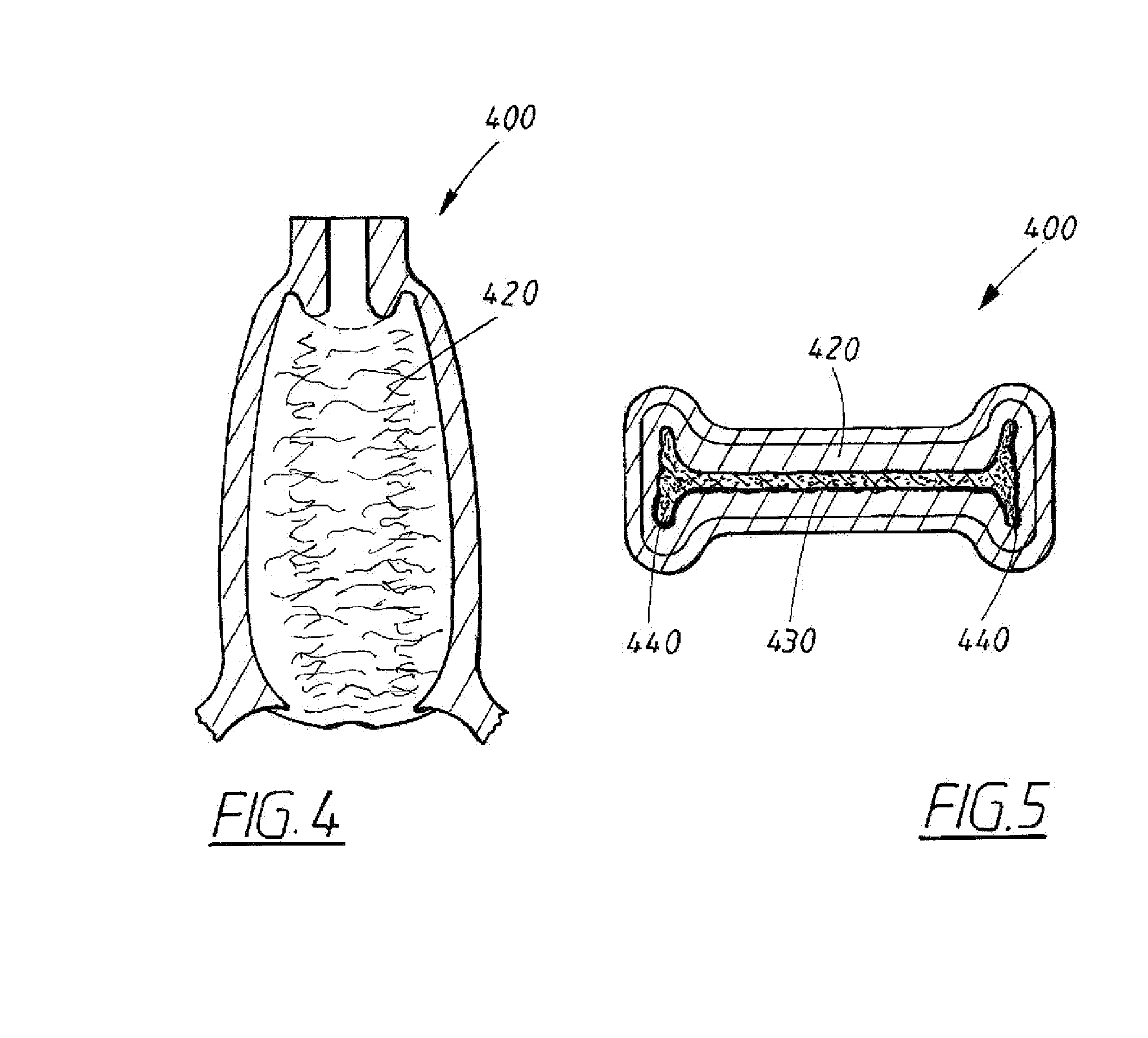Menstrual tampon
a menstrual tampon and compression technology, applied in the field of menstrual tampon, can solve the problems of fluid leakage out of the tampon, irritation and allergy, and many premature leakage, and achieve the effects of less swelling, less stable, and short pressing times
- Summary
- Abstract
- Description
- Claims
- Application Information
AI Technical Summary
Benefits of technology
Problems solved by technology
Method used
Image
Examples
Embodiment Construction
[0068]The tampon 101 shown in FIGS. 1 and 2 comprises an absorption body 102 enclosed in a liquid permeable cover 103 and having two withdrawal string ends 104 that are joined together in a knot 105. The tampon 101 has an elongate bullet-shape with a longitudinal direction L and a radial direction R, perpendicular to the longitudinal direction L and an insertion end 106 and a withdrawal end 107. Each of the insertion end 106 and the withdrawal end 107 occupy approximately one third of the total length of the tampon 101. The insertion end is shown with a rounded tip 117 and a flat withdrawal end surface 120. The tampon length between the tip 117 and the withdrawal end surface 120 may be determined by means of a slide calliper. Tampons commonly have a length in the dry, non-expanded state of from 30 to 70 mm, more common from 40 to 50 mm. The length will commonly vary with the size and design absorption capacity of the tampon.
[0069]The cover 103 may be any suitable non-abrasive liquid...
PUM
 Login to View More
Login to View More Abstract
Description
Claims
Application Information
 Login to View More
Login to View More - R&D
- Intellectual Property
- Life Sciences
- Materials
- Tech Scout
- Unparalleled Data Quality
- Higher Quality Content
- 60% Fewer Hallucinations
Browse by: Latest US Patents, China's latest patents, Technical Efficacy Thesaurus, Application Domain, Technology Topic, Popular Technical Reports.
© 2025 PatSnap. All rights reserved.Legal|Privacy policy|Modern Slavery Act Transparency Statement|Sitemap|About US| Contact US: help@patsnap.com



